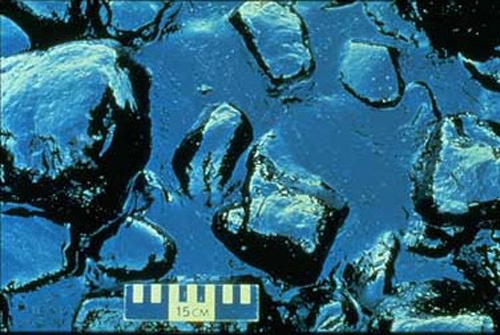 Happy Halloween, ladies and gentlemen readers! Instead of discussing cloning today, I have decided on a more timely topic. That's right, you can start groaning now. It's the history of Halloween. Why do I do this? It is important to know how our modern holidays developed. And what better holiday than this?
Happy Halloween, ladies and gentlemen readers! Instead of discussing cloning today, I have decided on a more timely topic. That's right, you can start groaning now. It's the history of Halloween. Why do I do this? It is important to know how our modern holidays developed. And what better holiday than this?Halloween has its origins in a holiday celebrated by the Celts of Ireland, the United Kingdom, and Northern France. That holiday is called Samhain (sau-wain), celebrated the day before their new year on November 1. The Celts believed that, on October 31, the barriers separating the world of the living from that of the dead thinned. The dead, then, were able to cross back into the living world for the night. These returned spirits caused trouble and ruined crops. But their presence made it easier for Druids, Celtic priests, to make predictions about the future. At night, the Druids built large bonfires. The people celebrated and burned crops and animals as offerings to the gods. They dressed in costumes, generally made from animal skins and attempted to tell each other's fortunes. When the festivities were over, they would relight their hearths from the sacred bonfires. It was believed that doing so would help protect them during the coming winter season.
Things changed somewhat when the Romans came into town in 43CE. During the time they ruled, two Roman holidays were combined with Samhain. They were Feralia, a day to celebrate the dead, and the day to honor Pomona, goddess of fruit and trees. One of the traditions believed to have eventually evolved from these incorporations is that of bobbing for apples. By the 800's, Christianity had swept it and begun exerting its influence. Pope Boniface IV named November 1 "All Saint's Day." It is believed that he might have been attempted to continue Samhain in a manner more acceptable to Christianity. Later, in the 1000's, November 2 was named "All Soul's Day." October 31 was known as "All Hallows Eve." Eventually, the words were slurred into "Halloween."
There are several symbols associated with Halloween. Most things dealing with Halloween revolve around death, magic, and mystical creatures. Common symbols involve skeletons, witches, ghost stories, bats, haunted houses, and black cats. There are many others. The traditional colors for the holiday are black and orange. Perhaps the most prominent symbol, however, is that of the Jack O'Lantern. The tradition of pumpkin carving derives from the Celtic myth of Stingy Jack.
To condense the story, Stingy Jack tricked the Devil twice. The first time, he tricked him into turning into a coin and kept him into his pocket next to a silver cross. When Jack released him, they made a deal. The Devil would leave him alone for a year and not take his soul upon death. At the end of the allotted time, Jack again tricked the Devil into another deal. Soon after, Jack died. God would not let him into Heaven and the Devil would not take his soul. With only a glowing coal, Jack was left to wander the earth. Legend says he put it into a carved-out turnip.
That, ladies and gentlemen, completes the entirety of useful information. Thank you for reading. Have a safe, happy Halloween and a blessed Samhain. Don't eat too much candy.
~Interminable Immediacy








